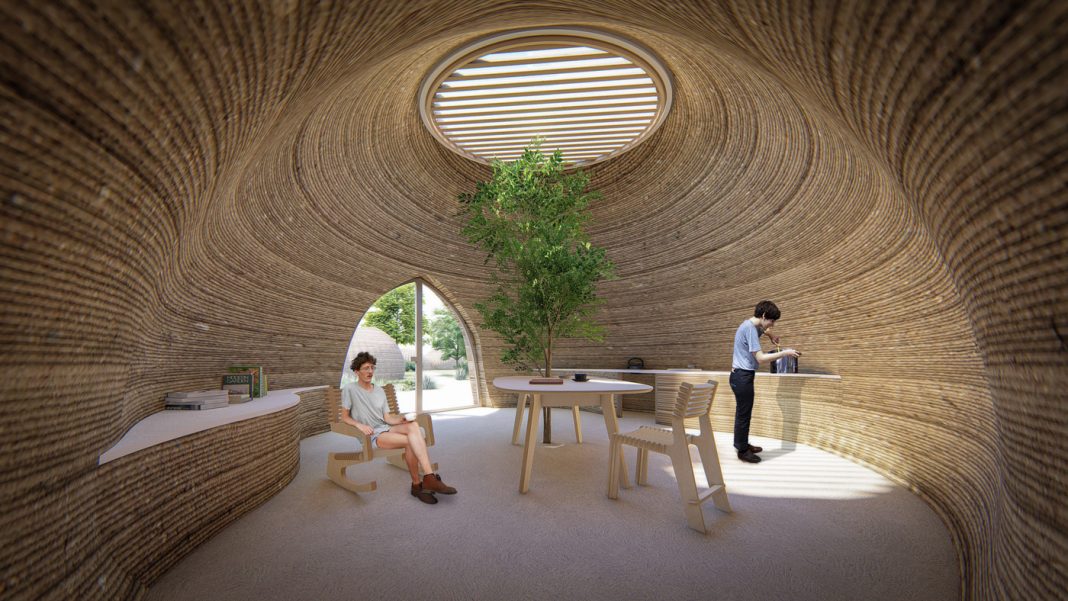TECLA (which takes its name from Technology and Clay) was made in Massa Lombarda (Ravenna, Italy) with the Crane WASP, WASP’s brand new 3D printer in the construction sector. The construction was an AM challenge because it maximized the performance of one of the oldest construction materials that is also used in the green economy: raw earth.
TECLA is the first eco-habitat built using multiple Crane WASP collaborative printers and it is another example of 3D technology creating buildings by optimizing the construction process and minimizing the use of human and energy resources. The notable feature of this concrete construction is its double dome, which creates inner and outer walls. In so doing, TECLA creates the elements for a 3D printed house: structure, roof and external cladding.
 The construction process can be replicated with the WASP Maker Economy Starter Kit. The Kit consists of multiple 3D printers and a system for picking, mixing and pumping materials. Two synchronized printing arms are coordinated by WASP proprietary software during construction. The software is a synthesis of years of research leading to the digital formation of shapeless matter. A TECLA can be printed in 200 hours via 7000 machine codes (G-code), using 350 12 mm layers (that is, 150 km of extrusion), or 60 cubic meters of natural materials. Electricity consumption for this build is less than 6 kW / hr.
The construction process can be replicated with the WASP Maker Economy Starter Kit. The Kit consists of multiple 3D printers and a system for picking, mixing and pumping materials. Two synchronized printing arms are coordinated by WASP proprietary software during construction. The software is a synthesis of years of research leading to the digital formation of shapeless matter. A TECLA can be printed in 200 hours via 7000 machine codes (G-code), using 350 12 mm layers (that is, 150 km of extrusion), or 60 cubic meters of natural materials. Electricity consumption for this build is less than 6 kW / hr.

TECLA and WASP are inspired by the potter wasp, whose hives are constructed in shapes similar to TECLA’s design. The company is focused on using AM to create a more circular economy through digital fabrication.
“From the shapeless earth to the earth as house-shaped. Today we have the knowledge to build with no impact in a simple click,” said Massimo Moretti, WASP’s Founder, “Technology is now at the human service and the home as a birthright is real.”
Mario Cucinella, the Founder of Mario Cucinella Architects and the School of Sustainability, said that: “The completion of the structure is an important milestone and shows that, thanks to the design and technologies used, TECLA is no longer just a theoretical idea but can be a real and achievable response to the needs of living today and the future, that can be declined in different contexts and latitudes.”















